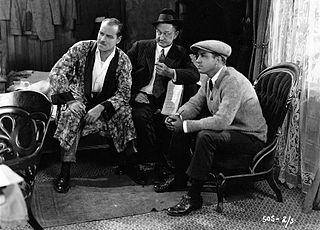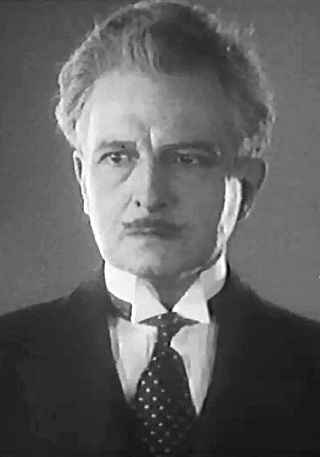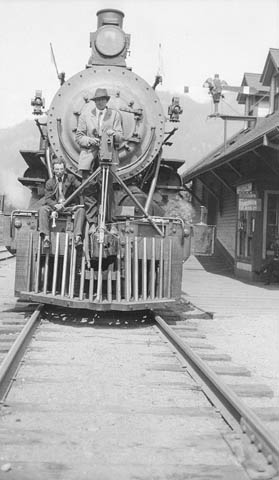
The Academy Award for Best Cinematography is an Academy Award awarded each year to a cinematographer for work on one particular motion picture.

Coquette is a 1929 American pre-Code drama film, starring Mary Pickford. The film was a box office success. For her role, Pickford won the second Academy Award for Best Actress.

Samuel Alfred De Grasse was a Canadian actor. He was the uncle of cinematographer Robert De Grasse.

Frank William George Lloyd was a British-born American film director, actor, scriptwriter, and producer. He was among the founders of the Academy of Motion Picture Arts and Sciences, and was its president from 1934 to 1935.

William H. Daniels ASC was a film cinematographer who was Greta Garbo's personal lensman, serving as the cinematographer for such Garbo-starring films as Torrent (1926), The Mysterious Lady (1928), The Kiss (1929), Anna Christie, Romance, Grand Hotel (1932), Anna Karenina (1935), and Camille (1936). Early in his career he worked regularly with director Erich von Stroheim, providing cinematography for such films as The Devil's Pass Key (1920) and Greed (1924). Daniels went on to win an Academy Award for Best Cinematography for his work on The Naked City (1948).

John Francis Seitz, A.S.C. was an American cinematographer and inventor.

Lee Garmes, A.S.C. was an American cinematographer. During his career, he worked with directors Howard Hawks, Max Ophüls, Josef von Sternberg, Alfred Hitchcock, King Vidor, Nicholas Ray and Henry Hathaway, whom he had met as a young man when the two first came to Hollywood in the silent era. He also co-directed two films with legendary screenwriter Ben Hecht: Angels Over Broadway and Actor's and Sin.

Arthur Edeson, A.S.C. was an American cinematographer. Born in New York City, his career ran from the formative years of the film industry in New York, through the silent era in Hollywood, and the sound era there in the 1930s and 1940s. His work included many landmarks in film history, including The Thief of Bagdad (1924), All Quiet on the Western Front (1930), Frankenstein (1931), The Maltese Falcon (1941), and Casablanca (1942).

Karl Struss, A.S.C. was an American photographer and a cinematographer of the 1900s through the 1950s. He was also one of the earliest pioneers of 3-D films. While he mostly worked on films, such as F.W. Murnau's Sunrise: A Song of Two Humans and Charlie Chaplin's The Great Dictator and Limelight, he was also one of the cinematographers for the television series Broken Arrow and photographed 19 episodes of My Friend Flicka.

Arthur Charles Miller, A.S.C. was an American cinematographer. He was nominated for the Oscar for Best Cinematography six times, winning three times: for How Green Was My Valley in 1941, The Song of Bernadette in 1944, and Anna and the King of Siam in 1947.

Tony Gaudio, A.S.C. was an Italian-American cinematographer and sometimes is cited as the first to have created a montage sequence for a film.

Charles Edgar Schoenbaum A. S. C. was an American cinematographer. His known film credits began in 1917--although he probably had earlier films--and ended with his untimely death from cancer in 1951. He was nominated for an Academy Award in 1949 for his work on Little Women.

Hal Mohr, A.S.C. was a famed movie cinematographer who won an Oscar for his work on the 1935 film, A Midsummer Night's Dream. He was awarded another Oscar for The Phantom of the Opera in 1943, and received a nomination for The Four Poster in 1952.
Joseph H. August, A.S.C. was an American cinematographer and co-founder of the American Society of Cinematographers.

George Delbert "Dell" Henderson was a Canadian-American actor, director, and writer. He began his long and prolific film career in the early days of silent film.

John M. St. Polis was an American actor.

George Henry Irving was an American film actor and director.

Leonard Smith was a cinematographer who had over 70 film credits from a career that spanned from 1915 to 1946.

Henry Cronjager was a cinematographer during the early days of silent film, and was active during the beginning of the sound film era.

Robert Kurrle, also known as Robert B. Kurrle, was an American cinematographer during the silent and early talking film eras. Prior to entering the film industry, he was already experimenting with aerial photography. Considered a very prominent cinematographer, even his early work received notice and praise from both critics and other industry professionals. The advent of sound film did not abate his continued rise, and he became the top director of photography at Warner Brothers by 1932.




















